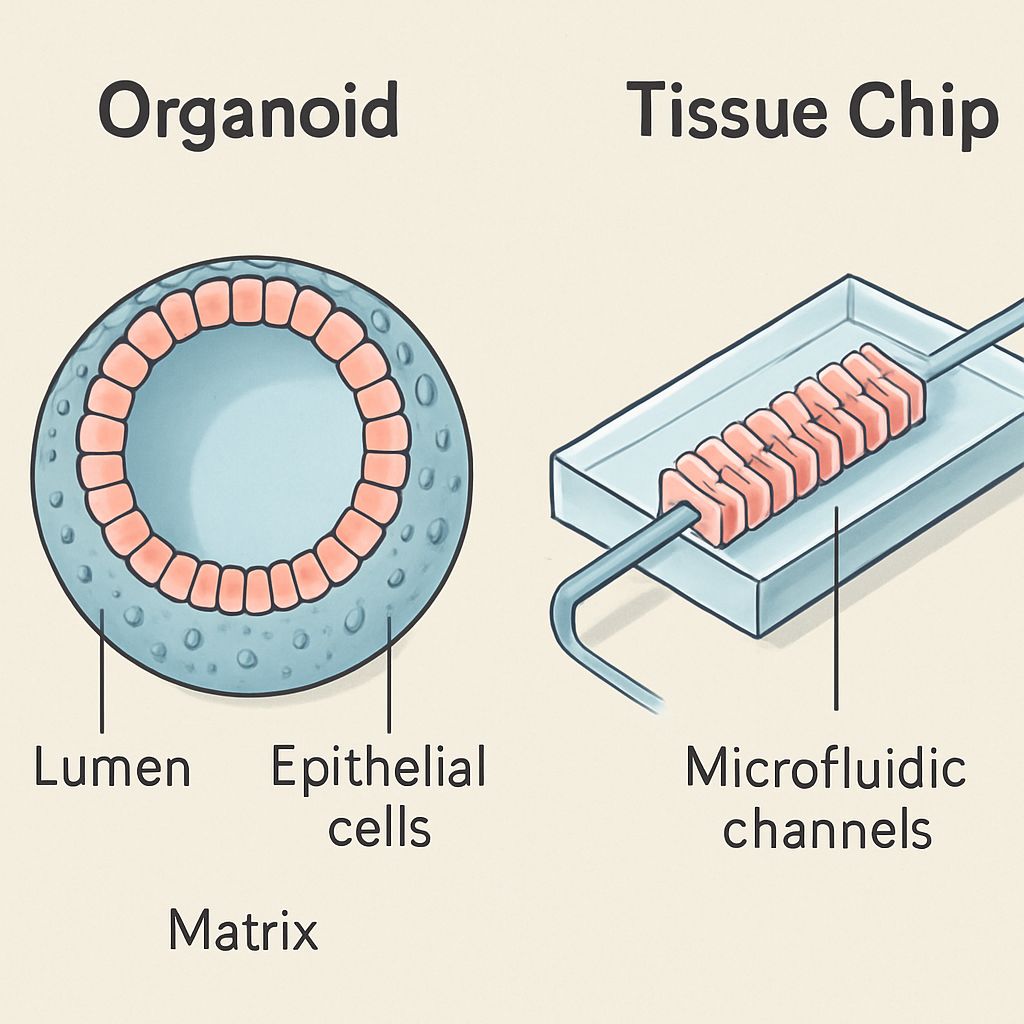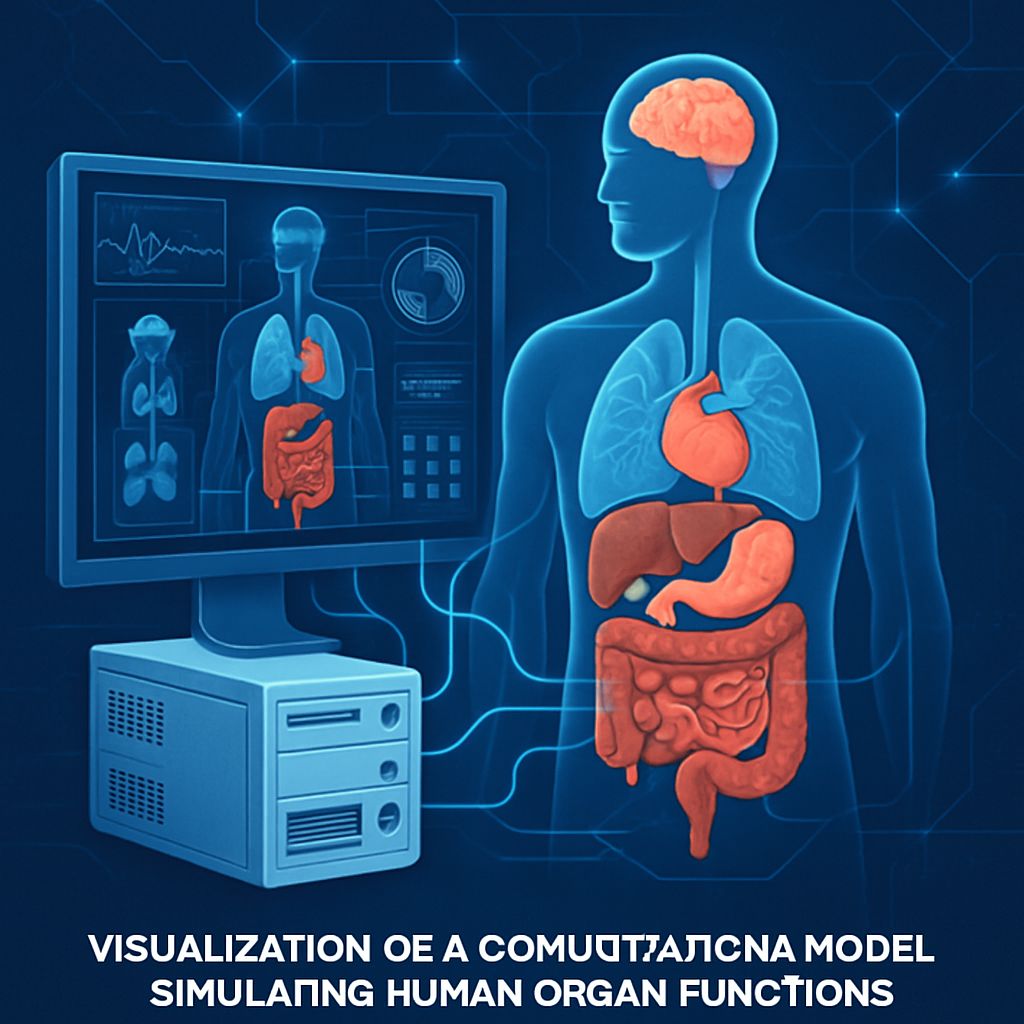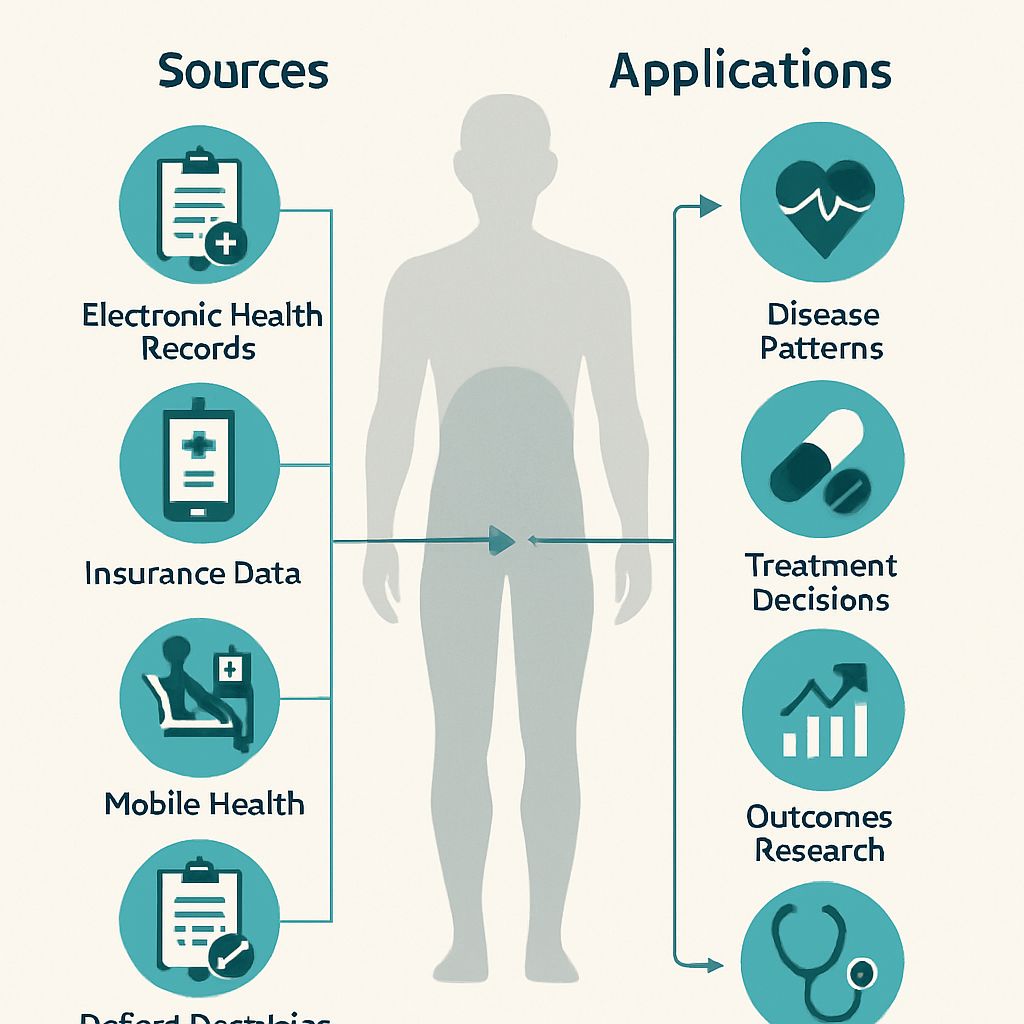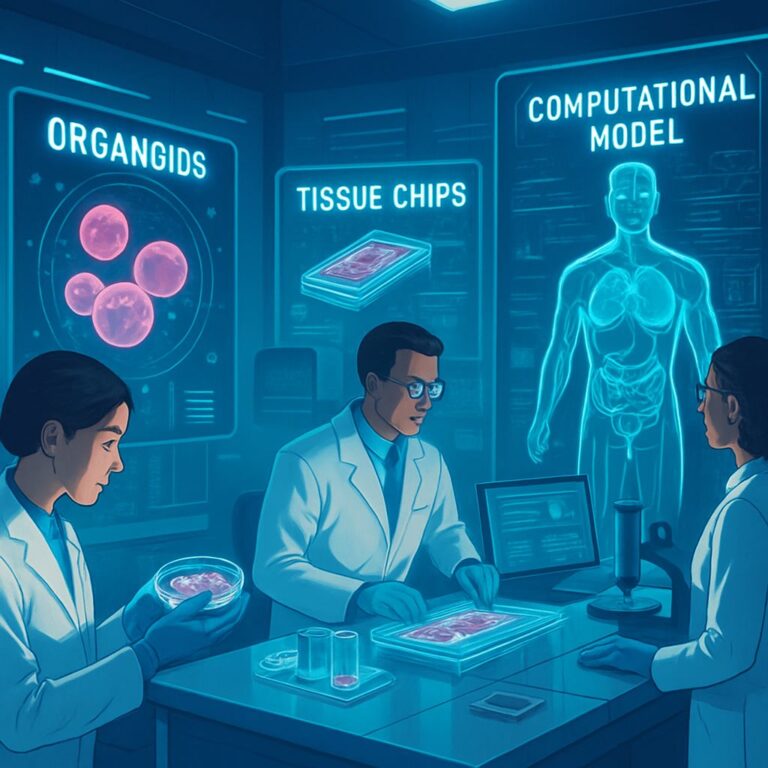NIH Human-Based Research Initiative: A New Era in Science🧬
The NIH Human-Based Research Initiative is marking a pivotal shift in the landscape of biomedical research. For decades, animal testing has been at the forefront of scientific discovery, but the NIH Human-Based Research Initiative is now leading a revolution. This innovative initiative is focused on reducing reliance on animal models by embracing human-specific technologies that offer more precise, ethical, and scalable research opportunities.
By prioritizing human-based research, the NIH is reshaping how we approach everything from drug development to disease understanding. This initiative underscores a new way of thinking about research, where human biology takes center stage, offering new hope for more accurate and faster treatments.
Is this something you want to search the entire internet for, analyze it, and separate it from everyone else?
After analyzing everything across the internet and gathering real-world insights, the Bhussan.com team shares this friendly, helpful article.
Section 1: The NIH Human-Based Research Initiative Explained
The NIH Human-Based Research Initiative aims to address many of the limitations associated with traditional animal testing. While animal models have been indispensable in the past, they often fail to replicate the complexity of human biology. With the introduction of human-based technologies, researchers are now equipped to test theories and treatments in ways that were once unimaginable.
These human-based technologies include organoids, tissue chips, and sophisticated computational models. By using human-derived cells and tissues, these technologies help scientists study human-specific disease processes, offering more reliable and relevant results. This approach not only reduces the need for animal testing but also accelerates the path to groundbreaking medical innovations.
Section 2: Cutting-Edge Tools in the NIH Human-Based Research Initiative
The NIH Human-Based Research Initiative integrates cutting-edge technologies such as organoids, tissue chips, and advanced AI-driven models. Organoids, miniature human organs grown in labs, replicate human organ functions, making them invaluable in studying diseases and testing drugs. Meanwhile, tissue chips allow for the simulation of human organs on a microchip, providing detailed insights into how different treatments interact with human cells.
By leveraging these tools, the NIH Human-Based Research Initiative is fostering an era of research where human biology, not animal models, is at the heart of discovery.
The Shift Towards Human-Based Research🧠
For decades, animal models have been the cornerstone of biomedical research. They’ve played pivotal roles in developing treatments for diseases like polio, diabetes, and cancer. However, these models often fall short in accurately predicting human responses, leading to costly failures in clinical trials.
Recognizing these limitations, the National Institutes of Health (NIH) is spearheading a transformative shift towards human-based research methodologies. This move aims to enhance the relevance and efficiency of biomedical studies while addressing ethical concerns associated with animal testing.
Introducing ORIVA: A New Era in Research🏢
To champion this initiative, the NIH has established the Office of Research Innovation, Validation, and Application (ORIVA). ORIVA’s mission is to:
-
Coordinate NIH-wide efforts to develop and validate non-animal research approaches.
-
Promote the adoption of innovative technologies that replicate human biology.
-
Expand funding and training opportunities for researchers in human-based methodologies.
-
Serve as a hub for interagency collaboration and regulatory guidance.
This strategic move underscores the NIH’s commitment to revolutionizing biomedical research through ethical and effective alternatives.
Cutting-Edge Technologies Leading the Way🔬

Organoids and Tissue Chips🧪
Organoids are miniature, lab-grown versions of human organs derived from stem cells. They mimic the structure and function of real organs, providing a powerful tool for studying diseases and testing drugs.
Tissue chips, or organs-on-chips, are microfluidic devices that simulate the physiological responses of human organs. These chips can model complex biological processes, offering a more accurate representation of human biology compared to traditional animal models.
Computational Models and Artificial Intelligence💻

Advancements in computational biology and AI have paved the way for sophisticated models that simulate human physiological processes. These models can predict how diseases progress and how patients might respond to treatments, reducing the need for animal testing.
For instance, AI-driven platforms can analyze vast datasets to identify potential drug targets, accelerating the drug discovery process and enhancing precision medicine.
Real-World Data Integration🌐
Incorporating real-world data (RWD) from electronic health records, patient registries, and wearable devices allows researchers to study health outcomes in diverse populations. This approach provides insights into how treatments perform in real-life settings, complementing findings from controlled laboratory experiments.
By leveraging RWD, scientists can identify trends, monitor long-term effects, and tailor interventions to specific patient groups, enhancing the overall effectiveness of healthcare strategies.

Pros and Cons of Human-Based Research Approaches
| Pros | Cons |
|---|---|
| Enhanced relevance to human biology | High initial investment costs |
| Reduction in ethical concerns associated with animal testing | Technical challenges in replicating complex organ systems |
| Potential for personalized medicine and targeted therapies | Regulatory hurdles and the need for standardization |
| Accelerated drug discovery and development processes | Limited long-term data on new methodologies |
Frequently Asked Questions (FAQs)🧠
1. What is ORIVA’s main objective?
ORIVA aims to coordinate and promote the development of non-animal research methods across the NIH’s biomedical research portfolio.
2. How do organoids contribute to disease research?
Organoids replicate the structure and function of human organs, allowing researchers to study disease mechanisms and test treatments in a controlled environment.
3. What are tissue chips, and how are they used?
Tissue chips are micro-engineered devices that mimic human organ systems, enabling the study of physiological responses and drug effects without animal models.
4. How does computational modeling aid in biomedical research?
Computational models simulate human biological processes, helping predict disease progression and treatment outcomes, thereby reducing reliance on animal testing.
5. What is the significance of real-world data in research?
Real-world data provides insights into how treatments perform in everyday settings, informing more effective and personalized healthcare strategies.
6. Are these human-based methods widely accepted in the scientific community?
While gaining traction, widespread adoption requires further validation, standardization, and regulatory approval.
7. Do these methods completely eliminate the need for animal testing?
Not entirely. While they significantly reduce reliance on animal models, some scenarios may still necessitate animal studies until alternatives are fully validated.
8. How does the NIH plan to support researchers transitioning to these methods?
Through ORIVA, the NIH will offer funding, training, and resources to facilitate the adoption of human-based research approaches.
9. What challenges exist in implementing these new methodologies?
Challenges include technical complexities, high initial costs, and the need for regulatory frameworks to accommodate new technologies.
10. How do these initiatives align with global trends in research ethics?
They reflect a growing international emphasis on ethical research practices and the reduction of animal testing in scientific studies.
11. What is the NIH Human-Based Research Initiative?
The NIH Human-Based Research Initiative is a program aimed at reducing the reliance on animal testing by using advanced human-specific technologies like organoids, tissue chips, and computational models in biomedical research.
12. Why is the NIH focusing on human-based research over animal models?
The goal is to achieve more accurate, human-specific results and speed up the discovery of treatments without relying on traditional animal testing, which may not always reflect human biology.
13. How does organoid technology help reduce animal testing?
Organoids are miniature, 3D models of human organs grown in a lab. They replicate human organ functions and are used to study diseases and test treatments, offering a non-animal alternative.
14. What are tissue chips, and how do they contribute to biomedical research?
Tissue chips are microchips that simulate human organs and tissues on a small scale. They allow researchers to study human disease processes, drug interactions, and treatments in ways animal models can’t replicate.
15. Can computational models replace animal models entirely?
While computational models offer great promise in simulating human biology and disease, they are typically used in combination with other methods, including animal models, to ensure comprehensive research outcomes.
16. How do real-world data sources benefit biomedical research?
Real-world data, such as health records and patient outcomes, allows researchers to analyze human health trends, disease prevalence, and treatment effectiveness at the population level.
17. What is the impact of reducing animal testing on public health?
Reducing animal testing helps improve the ethical standards of biomedical research, accelerates innovation, and ensures that treatments are more closely aligned with human biology, ultimately benefiting public health.
18. How can computational models simulate disease pathways?
Computational models use algorithms and data from human biology to simulate disease processes and predict how diseases evolve, enabling better predictions for treatment responses without animal involvement.
19. Are these human-based technologies more cost-effective than animal research?
In the long run, technologies like organoids and tissue chips may prove to be more cost-effective, as they provide quicker, more reliable results without the ongoing costs of animal care, housing, and experimentation.
20. How will the NIH fund the shift to human-based research?
The NIH plans to increase funding for innovative technologies and support training programs to expand the use of non-animal research methods across biomedical science.
21. Can human-based research lead to faster medical breakthroughs?
Yes! By using models that more accurately reflect human biology, researchers can streamline the testing process, making it easier to identify effective treatments and bring new therapies to market faster.
22. What role does AI play in the NIH Human-Based Research Initiative?
AI is used to process complex data, build simulations, and predict outcomes, enabling researchers to explore human biology, disease mechanisms, and drug responses more effectively and accurately.
23. Will the NIH Human-Based Research Initiative replace all animal testing?
While the initiative aims to reduce animal testing, it may not entirely replace it in all cases, particularly in research that requires a broader understanding of whole-organism responses. However, it encourages alternatives wherever possible.
24. How does the NIH ensure the reliability of human-based research models?
The NIH focuses on validating human-based research models through rigorous testing, interagency collaboration, and constant refinement of technologies to ensure they produce consistent and reliable results.
25. Will patient-specific characteristics be incorporated into human-based models?
Yes! Technologies like organoids and computational models can be customized to reflect patient-specific characteristics, allowing researchers to simulate how a particular patient might respond to a treatment.
26. How does the NIH Human-Based Research Initiative address ethical concerns in research?
By reducing the reliance on animal testing, the NIH is taking a step toward more ethical research practices that prioritize human well-being and respect for animal life while advancing scientific discovery.
27. What are some challenges in scaling human-based research technologies?
Challenges include the need for specialized expertise, high costs of technology development, the complexity of creating accurate models, and regulatory hurdles that need to be overcome for broader adoption.
28. What are some examples of diseases that can benefit from human-based research models?
Diseases like cancer, Alzheimer’s, diabetes, and cardiovascular conditions can benefit from human-based models that provide more accurate representations of disease progression and treatment response in humans.
29. How does the NIH Human-Based Research Initiative affect drug development?
This initiative helps streamline drug development by using human-specific models to test drug efficacy and safety, ultimately reducing time spent on animal trials and improving the likelihood of successful clinical outcomes.
30. How can researchers and students get involved in the NIH Human-Based Research Initiative?
Researchers and students can access training programs, funding opportunities, and collaborative networks that the NIH provides to advance skills and knowledge in human-based research technologies.
Conclusion📝
The NIH’s initiative to prioritize human-based research marks a significant milestone in the evolution of biomedical science. By embracing innovative technologies like organoids, tissue chips, and computational models, the research community moves closer to more ethical, accurate, and personalized healthcare solutions.
Ready to explore more about these groundbreaking advancements? Stay tuned to Bhussan.com for the latest updates and in-depth analyses.

